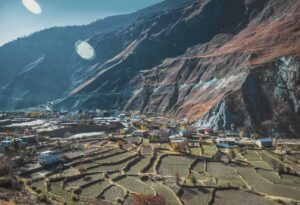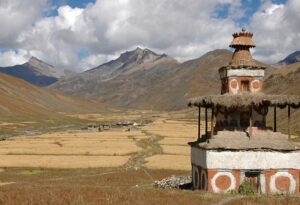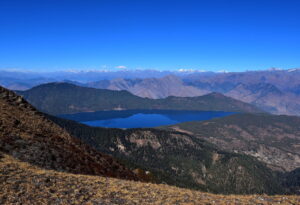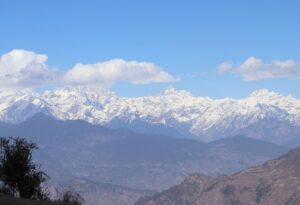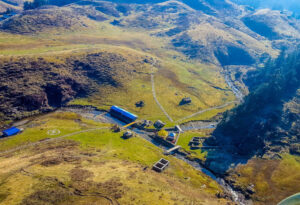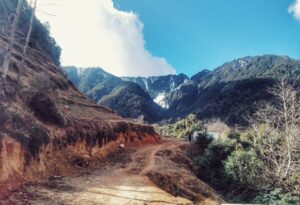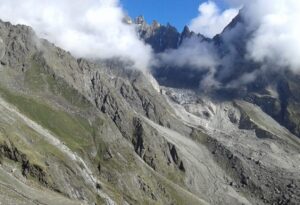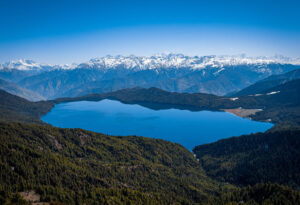Introduction: Why Choose Rural Trekking in Nepal?
When most people think of trekking in Nepal, their minds instantly jump to the Everest Base Camp or the Annapurna Circuit. And sure, those treks are world-renowned for a reason—but what if we told you there’s an even more intimate, soulful, and serene side of Nepal waiting to be explored? Welcome to the world of best rural treks.
Rural trekking in Nepal is more than just walking through forests and up mountain trails—it’s a passage into the heart of Himalayan life. These lesser-known routes take you away from the beaten path and into picturesque villages, vibrant local cultures, untouched landscapes, and a level of peace that even the highest summits can’t provide. It’s a different kind of thrill—quiet, immersive, and profoundly transformative.
These treks aren’t about “checking off” major mountain peaks or collecting passport stamps at high-altitude tea houses. They’re about sipping hot chiya (tea) with a Gurung grandmother, watching schoolchildren race barefoot across terraced fields, and hearing the echo of Buddhist chants as prayer wheels spin slowly in the wind.
Nepal’s rural treks are ideal for travelers looking for authenticity. They’re also more eco-conscious, more budget-friendly, and—frankly—more rewarding for those who want meaningful connections over mass tourism. Plus, they’re accessible. You don’t need to be a hardcore hiker with crampons and oxygen masks. Many of these trails are low-altitude, safe, and great for families, solo travelers, and cultural adventurers alike.
Whether you’re a beginner looking for a quiet escape or an experienced trekker craving raw, unfiltered adventure—rural Nepal has something magical to offer. Let’s dive deep into this underrated Himalayan treasure and explore the best rural treks Nepal has in store for you.
What Makes Rural Treks Different from Commercial Treks?
The Soul of the Himalayas: Villages, Culture, and Nature
Trekking in Nepal’s rural regions is not about altitude—it’s about attitude. While commercial treks offer staggering peaks and adrenaline rushes, rural treks gift you the soul of the country: the villages, the people, and the way of life that’s remained unchanged for centuries.
You’ll be walking through fields, ancient stone steps, and jungle paths—not dodging yak traffic jams or helicopter landings. The trails lead you through small, cozy settlements where time slows down. You’ll stay in family-run lodges or village homestays, where dinner is cooked fresh over firewood and served with stories.
These regions, often overlooked by mainstream tourism, allow trekkers to see real Nepal. There are no inflated prices or crowds posing for Instagram shots—just genuine hospitality, organic food, and landscapes that haven’t been trampled by a thousand boots.
Crowd-Free Paths and Serene Solitude
Rural trekking is also a gift to your mental wellness. The absence of crowds lets you reconnect with nature—and yourself. You can actually hear birdsong, wind whistling through pine forests, and streams burbling alongside you. Try doing that on the Everest Base Camp trail where 500 people may be trekking beside you.
Peace and privacy come standard with rural trails. Whether it’s the quiet serenity of Balthali’s orange groves or the panoramic tranquility of Nagarkot’s sunrise point, rural trekking lets you breathe in the Himalayas without distraction.
And let’s not forget—these trails are safer too. Fewer people means less waste, less environmental degradation, and less risk of trail erosion. You’re not just visiting rural Nepal—you’re helping to preserve it.
The Cultural Treasure Behind Rural Trails
The Stories and Smiles of Himalayan Locals
The magic of rural trekking lies not just in the landscape, but in the people. Every trail winds through communities that have lived in harmony with the Himalayas for centuries. Their stories, smiles, and hospitality are what transform a “trek” into a “memory.”
In places like Dhampus or Ghalegaun, you’ll meet Gurung and Magar families who open their doors and hearts to you. They’ll offer you butter tea, show you how to spin wool, or invite you to dance around a campfire during a local festival. You’ll learn firsthand how mountain life shapes identity, faith, and resilience.
You won’t get this kind of connection on commercial treks, where the pace is too rushed, and the environment too transactional. In rural Nepal, human interaction is slow, meaningful, and transformative.
Festivals, Traditions, and Daily Life
Another reason rural treks are rich in culture? They often align with festivals and seasonal events that few outsiders get to witness. You might find yourself in a village during Tihar (the festival of lights), with oil lamps flickering on every doorstep and young girls singing traditional Deusi-Bhailo songs. Or you may witness a local harvest festival, complete with offerings to the gods, animal sacrifices, and communal feasts.
Daily life itself is a cultural immersion. You’ll see how millet is ground into flour, how buffaloes are milked at dawn, and how locals rely on herbs and roots for medicine. You’ll hear the clang of prayer bells, the hum of monastic chants, and the whistle of wind across mountain ridges.
Culture is not just observed—it’s lived, breathed, and shared with you, one step at a time.
Top 5 Off-the-Beaten-Path Treks by Kalpa Holidays
Nepal’s rural trek scene doesn’t stop at the common trails—there’s a whole different level of adventure in the remote trails curated by Kalpa Holidays. These treks are designed for those who want to go beyond the ordinary, deep into untouched territories that even many locals haven’t explored. Here’s a closer look at five such journeys:
1. Upper Dolpo Trek
Upper Dolpo is one of Nepal’s most remote and mystical regions. Tucked away in the northwestern rain shadow of the Himalayas, it feels like stepping into a forgotten world. The landscape is stark and surreal, resembling Tibet more than the green hills of central Nepal.
Highlights:
-
Shey Phoksundo Lake (Nepal’s deepest and bluest)
-
Tibetan-Buddhist culture with Bon monasteries
-
Cross passes like Kang La (5,350 m)
-
Spot elusive snow leopards or blue sheep
Why it’s special: This trek isn’t just a physical challenge—it’s a cultural odyssey. The isolation of Dolpo has preserved centuries-old traditions, untouched by modern tourism. This is one of the few places where you can witness pure trans-Himalayan lifestyles.
Ideal for: Experienced trekkers with good fitness and a thirst for adventure. The trek takes about 25 days and starts from Juphal after a flight from Nepalgunj.
2. Lower Dolpo Trek
Slightly less strenuous than its upper counterpart, the Lower Dolpo trek is equally magical. It’s perfect for those who want to see the beauty of Dolpo without tackling extremely high-altitude passes.
Highlights:
-
Phoksundo Lake
-
Tarap Valley and Dho village
-
Rich medicinal plant biodiversity
Why it’s special: The Lower Dolpo trek offers you dramatic scenery, high-altitude desert landscapes, and rich wildlife. What’s even better? Fewer trekkers venture here, making it a rare gem of serenity.
Duration: 24 days
Best Season: Spring and autumn
Fitness Level: Moderate to high
3. Mount Api Base Camp Trek
Mount Api, standing tall in Nepal’s far western district of Darchula, is one of the least-climbed and least-trekked peaks in the country. But those who dare to go are rewarded with raw natural beauty and unmatched solitude.
Why it stands out:
-
The trail leads you through pristine forests, wild rivers, and traditional Khas communities.
-
You’ll witness untouched biodiversity, including rare Himalayan flora and fauna.
-
It’s a spiritual and quiet trek—no crowds, no commercialization.
Duration: 15 days
Max Altitude: ~4,000 meters
Difficulty: Moderate
4. Khaptad Region Trek
Often referred to as the “spiritual trek,” Khaptad National Park is sacred to Hindus and filled with rolling meadows, dense forests, and meditation spots once used by the sage Khaptad Baba.
Why you should go:
-
Unique landscapes not found in other parts of Nepal—think meadows, lakes, and wildflowers.
-
Culturally rich—locals believe the area has divine powers and healing energies.
-
Ideal for quiet reflection, nature photography, and bird watching.
Trek Duration: 12 days
Difficulty: Easy to moderate
Altitude: Mostly under 3,000 meters
5. Rara Lake Trek
Known as the “Queen of Lakes,” Rara is the largest lake in Nepal and arguably the most beautiful. Surrounded by alpine meadows and conifer forests, it’s the definition of peaceful isolation.
Trek Highlights:
-
A scenic flight to Jumla, followed by a multi-day trek
-
Incredible views of Rara Lake and snow-capped peaks
-
Cultural encounters with Thakuri and Tibetan communities
Why choose it: This trek gives you both cultural depth and ecological richness. Rara’s national park is home to red pandas, Himalayan bears, and over 200 species of birds.
Trek Duration: 14 days
Fitness Level: Beginner to intermediate
Ideal for: Nature lovers and solo trekkers


